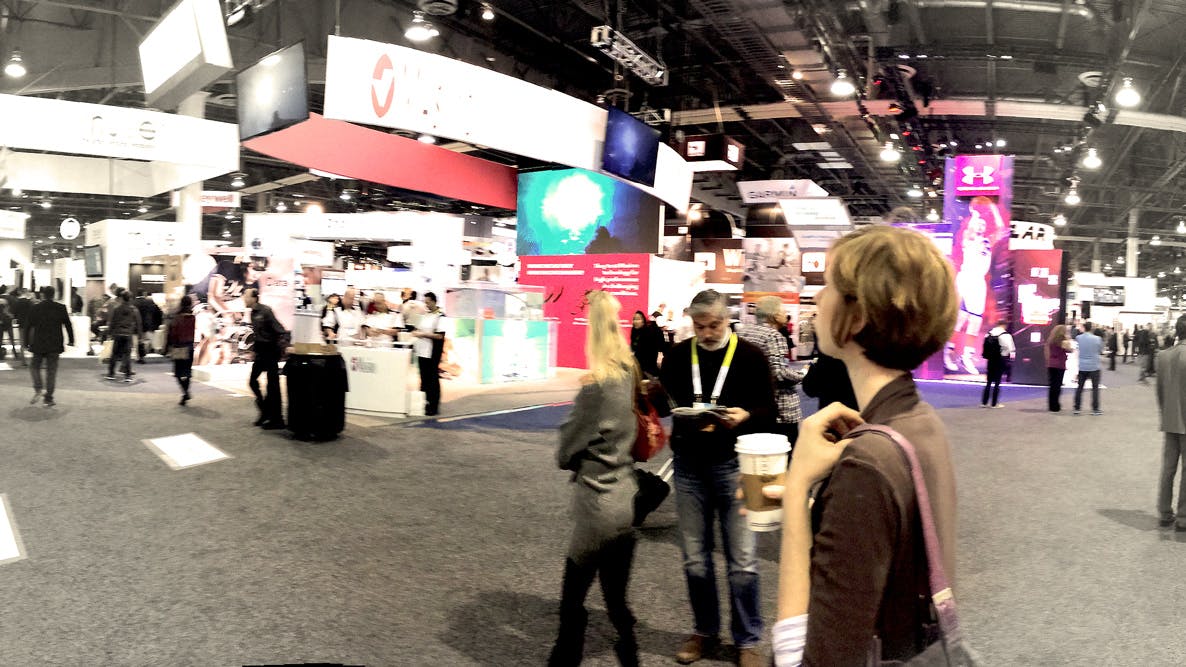Wearables at CES 2015: Enough with the activity trackers!
At CES 2015, activity trackers were the bandwagon that many companies jumped on. Really? Isn't there something better to do with this technology?
Wearables at CES 2015: Enough with the activity trackers!
CES 2015 (Consumer Electronics Show) wasn’t a year for big unveils and shifts in conversation. Everything was smart, everything had an app, and the Internet of Everything was still an overarching promise for the future.
For some, this year’s show felt expected and anticlimactic. We’ve been seeing smart, wireless products for a while now, but what was unexpected was the sheer number of wrist-worn activity trackers dominating the wearable category, which is pretty remarkable considering the first Fitbit came out only two years ago.
What was also unexpected was how quickly most of these activity trackers started to blur together. After a few hours we couldn’t look at another brightly colored tracker that counted your steps, calories and sleep. We had expected to see lots of wearables this year but also expected to see more differentiation. As my co-worker, Kenny Hsieh, so perfectly put it, “It was like ordering the 20 piece Chicken McNugget meal for the first time. The first few may be delicious and amazing, but by the 17th or 18th you just get sick of them.”
Although many of the wrist-worn wearables seemed to have similar capabilities, we did observe companies pushing for different design aesthetics. Fitbit and Misfit, for example, were two brands trying to stay in front of all the “me too” companies by partnering with fashion designers to extend their appeal beyond the fitness enthusiast. Withings Activite Pop, a French smart device company, went a different direction aesthetically by creating a beautiful watch that discreetly tracks your activity.
Beyond pushing the aesthetics to look less like a conventional fitness tracker, how will this category continue to develop? It feels like “lifestyle” is where many of these brands are headed by marketing their products as a tool for healthy living, rather than fitness. But are these products really making people more self-aware? Or are many of these lifestyle activity trackers having the opposite effect and creating a crutch to keep people removed from how they’re really feeling because it’s easier for us to deal with a number, smiley face or LED light on a device than take the time to be introspective and mindful of ourselves?
I certainly think there are more opportunities beyond the fitness enthusiast for self-tracking wearable devices. But right now it seems that the industry is focusing on the easy stuff and ignoring some very large groups of people with chronic health conditions like diabetes and heart disease that could benefit from self-tracking. What about the aging population, many of whom don’t have smart phones? Or lower-income populations who are more at risk of chronic disease but can’t afford a $200 activity tracker? What information would be most beneficial to track? How do we include doctors and health systems in ways that are useful but also respect patient privacy? And how could we use this data beyond ourselves to help understand larger trends in healthcare?
So while it seemed like the products featured CES 2015 reflected a holding pattern, especially when it came to wearables, there are some game-changing opportunities out there. That’s particularly true when it comes to meaningful technology that empowers people to take control of their health. Hopefully, we’ll see some of those products at CES 2016.
In other words, no more McNuggets, please.
For more insights, download our CES Report.
